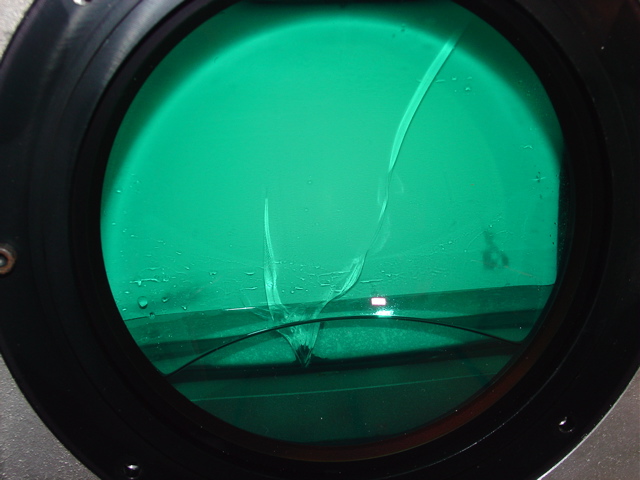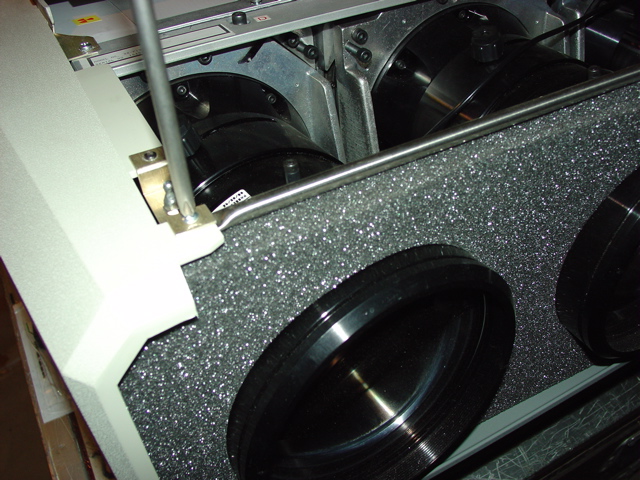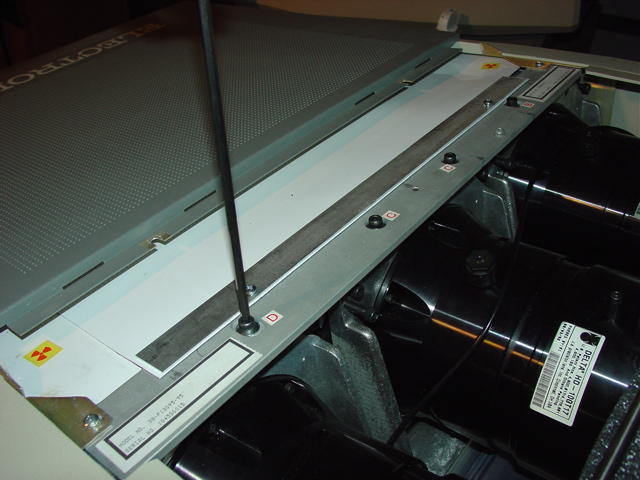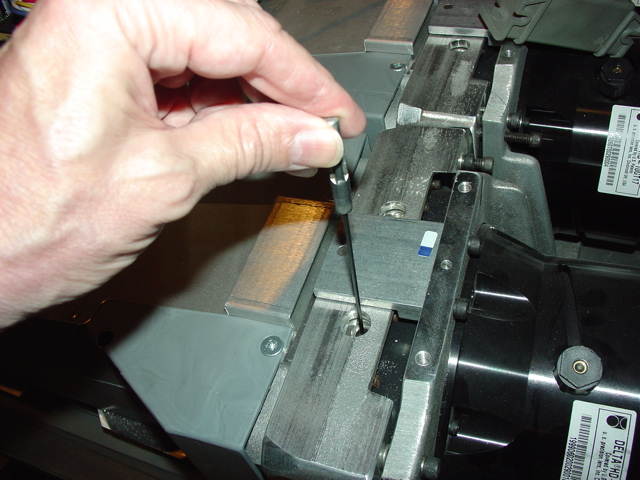The following procedure and pictures were provided by Tim Martin.
Thanks Tim! While it was written with Marquee LC projectors in mind, it's
also pertinent for any LC projector.
Looking for a similar procedure for air coupled (AC) projectors? See
here.
For definitions of c-element, liquid
coupling (LC), or air coupling (AC), see
this page.
Guys!
Those with LC Marquees, Vision Ones and Madrigal MP9s (and other projectors
with LC tubes) will want to check
their tubes on occasion so pressure does not build up in the fluid chamber; you
don't need this:

Procedure:
If ceiling mounted, lay down some plastic sheet like five feet square.
The plate across all three tubes can be removed to access the vent holes. It
will be necessary to spread the cabinet sides a bit, so remove a screw for the
"spreader bar" or remove the bar entirely:

The metal plate holds the sides in, so remove those screws, one each side:

The are two screws in the back into the heatsink, remove those if necessary.
It should not be necessary to pull the sides if the unit is ceiling mounted.
The plate is held to the tubes, and has x-ray shielding attached, so remove
four Allen head bolts, 3/16" wrench; pins stick out of the plate into the tube
castings so some prying and manoeuvring is needed:

With the plate removed, you can see the rubber bellows (black between the
castings) and two fill-holes on each tube. If the bellows is hard to the touch
then some glycol should come out as a precaution. Glycol sucks water vapour right
through the rubber, no joke!

The fill-hole plugs are tiny Allen screws and gaskets, 5/64" if I recall
right:

Glycol can pressurize and shoot out with considerable force so watch
out!!!!!!!!! Have a bucket directly underneath, and goggles are not a bad idea.
Remove enough glycol so the rubber is spongy to the touch with the plug
reinstalled.
When you vent something like this that is ceiling mounted and the fill-hole
plugs are on the bottom, once you remove the plugs the glycol is thick enough
that once the excess glycol under pressure comes out, the rest will stay in the
tube. Don't worry - you won't completely empty the tube! When I am
draining glycol on loose tubes, even when upside-down, if I remove both
fill-hole plugs, there are just a few drops or none if not pressurized, the
glycol is quite oily and it stays put if air is not coming in. The fill-holes
are tiny, maybe 2mm. What is needed is air to push the glycol out, and your
garden variety canned air with a thin tube on the nozzle is just the air needed
to drain effectively. To vent an ounce on a ceiling, pushing on the bellows
should suffice.
This procedure is for ceiling (upside down) only. Table standing chassis are
best vented with the tubes removed or you risk glycol going everywhere. If you
want less work than that, remove the top plate and flip the unit upside down,
very carefully, so the fill holes extend over the edge of a table. The unit is
quite front-heavy so do this with helpers or some method to secure the back end
against falling off the table.
You do not ever want to remove fill-hole plugs on a
pressurized tube sitting in a projector that is upright; glycol could shoot out
with considerable force and trash the chassis!
Good luck!
| Did you find this information useful? Please consider making a
donation to help defray the cost of managing and hosting future
articles, tips, and documents. |
|
|
|
Or
purchase
from
Amazon.com
and a small percentage automatically
goes to support this site at no extra cost to you! Visit their
Blu-ray and
4K UHD
stores for sales.
Want to show off your
home theater? See our
Blu-ray Release List & Must-Have Titles. |
|

|
|

|









